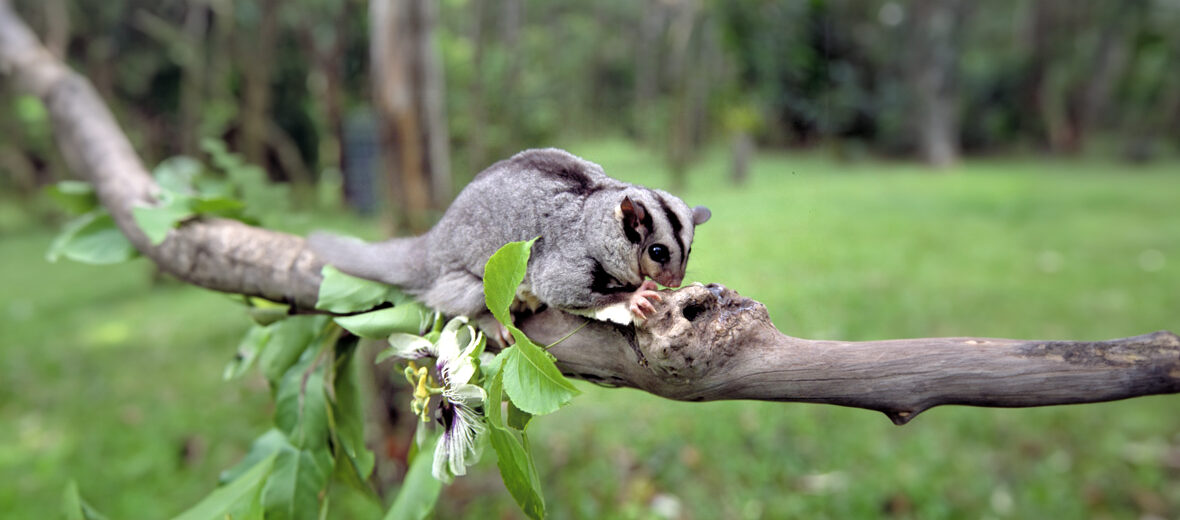
The mahogany glider looks just like a sugar glider & hails from a tiny area between Ollera Creek south of Ingham and Tully in North Queensland, Australia. These adorable little marsupials face the threats of habitat loss and destruction at the hands of farming, ranching, logging, marine and freshwater aquaculture, fires, and fire suppression tactics; roads that divide their habitat and result in vehicle strike, being hit by vehicles; barbed wire fences, that can result in these critters being snagged and killed; and invasive species that can bring about disease and predation. The IUCN lists these possums as Endangered. Their severely fragmented populations are also decreasing.
First the Stats…
Scientific name: Petaurus gracilis
Weight: Up to 17.6 ounces
Length: Up to 11 inches, plus up to a 16 inch tail
Lifespan: Up to 6 years
Now on to the Facts!
1.) These gliders are sexually dimorphic, with males being larger than females.
2.) They prefer an open forest habitat with a wide variety of flowering plants that provide a year-round food supply.
3.) Mahogany gliders feast on acacia sap and seeds, eucalypt sap and gum, grass tree sap, honeydew, mistletoe, nectar, pollen, wattle exudates, insects, and at least 20 different shrub and tree species.
4.) The mahogany glider is nocturnal (active at night).
5.) Deep, nasal grunting sounds are produced when traveling at night, and a similar, however much louder and more rapid, alarm call, which has been likened to the sound of a lawnmower is also produced.
But wait, there’s more on the mahogany glider!
6.) These possums are usually monogamous (stay with 1 partner their entire life). However, extra-pair matings have been documented.
7.) Their breeding season is lengthy and extends from April – October.
Did you know…?
They are capable of gliding up to 197 feet from tree to tree!
8.) Females undergo up to a 16 day gestation (pregnancy) that yields up to 2 joeys.
9.) Once in the pouch, the joeys continue to develop and are weaned in up to 5 months.
10.) These critters spend up to 10 hours a night looking for food or a partner.
But wait, there’s still more on the mahogany glider!
11.) Traveling up to .93 mile a night in search of food is common.
12.) Owls, pythons, and cats all prey on these critters.
Now a Short Mahogany Glider Video!
Be sure to share & comment below! Also, check out the Critter Science YouTube channel. Videos added regularly!
Want to suggest a critter for me to write about? Let me know here.
Some source material acquired from: Wikipedia & IUCN
Photo credit: Pfinge




